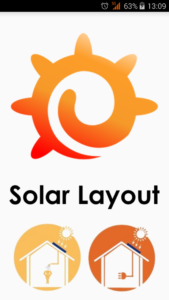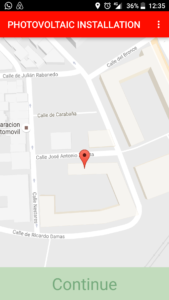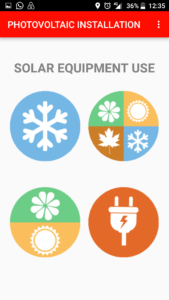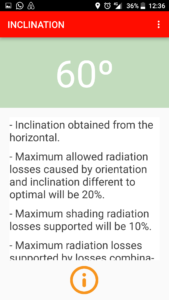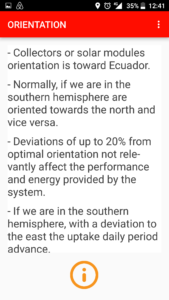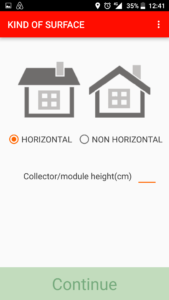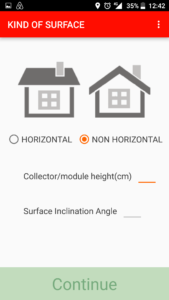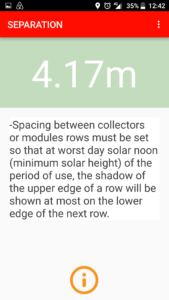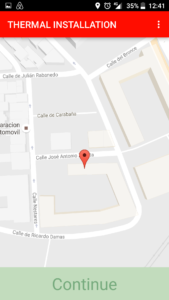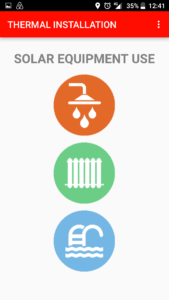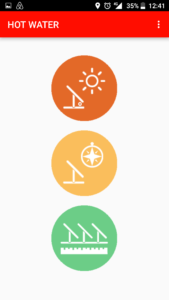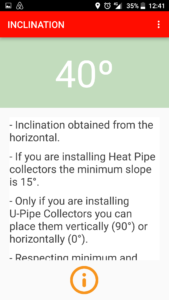Within group of solar collectors without concentration are the vacuum tubes collectors.
Currently they are the most used.
As was seen in flat collector’s analysis, conversion of radiant energy from the sun to thermal energy leads to radiation, conduction and convection losses that progressively decrease the yield as temperature difference between collector and environment increases.
Improvement provided by vacuum tube collectors is to avoid conduction and convection losses.
If less heat is lost, we will in most cases obtain more yield for same amount of Sun energy.
We will see that this is not always the case and depends on temperature of use.
Vacuum collectors find their main application in intermediate temperature systems (heating, air conditioning, industrial processes, etc.) and in cold places with high differences between collector temperature and the environment.
The vacuum technique used by fluorescent tubes manufacturers has been developed and is the one used by vacuum tube manifolds manufacturers.
Vacuum tube collector systems are based on evacuated tubes.
These are formed by two concentric tubes between which the air has been sucked up producing a vacuum. At one end, both tubes are joined by sealing the vacuum. Inside both tubes are located the different types of absorbers that determine the different systems.
Single evacuated tubes are evacuated tubes, assembled directly with accumulation tank or independently, which may contain only water or water plus antifreeze.
A dark colored layer of absorbent material is located on evacuated tube inner wall.
When solar radiation strikes the absorbent material layer it is transformed into heat and raises the temperature of the fluid that is in contact with it.
The fluid is heated by convection and begins to rise through the tube being replaced by cold fluid which in turn heats up and restarts the process.
This type of vacuum tube offers the advantage of having the aforementioned few heat losses and the disadvantages of being very sensitive to pressure.

U-Pipe vacuum manifolds are used both in individual collectors and in compact solar systems with integrated tank.
Absorber can be placed on tube wall as in evacuated tube case or on an absorbent material sheet.
In any case, absorber is run on its surface by a pipe (preferably copper) through which the fluid raises its temperature in contact with it flows.
U-Pipe tube manifolds have the advantage of being able to adopt both horizontal and vertical position without impairing their performance since tube can rotate on its axis by tilting absorber in the most appropriate way in case the absorber has sheet shape.

Finally, in vacuum tube technology we find heat pipe manifolds.
They employ a mechanism consisting of a closed tube into which a vaporizing fluid (alcohol mixture) of specific properties is introduced.
When sun hits absorber attached to the tube, fluid evaporates and absorbs heat (latent heat). As gas rises above liquid to top of the tube where the cold spot is located. There it liquefies (condenses) and yields its latent heat to the fluid we are interested in heating by falling back to tube bottom by capillarity or gravity.
This process (evaporation – condensation) is repeated for sun’s radiation duration or until collector has reached a very high temperature (around 130 ° C or more).
They have the advantage that each tube is independent being able to change in full system operation. It is highly frost resistant.
Since tubes can also rotate on their axis, it is possible to adopt vertical and horizontal positions as in the case of U-Pipe systems, although in this case generally a minimum tube inclination (between 15º and 20º according to manufacturer) to allow fluid, once liquefied, to fall by gravity.
There are 3 qualities of these collectors:
– Dry union: heat exchange occurs without direct contact between heat transfer fluid and tube, which makes them very suitable in areas with unfavorable water qualities.
– Diode function: heat transfer is always carried out only in one direction, from absorber to heat transfer fluid, and never other way round.
– Temperature limitation: evaporation – condensation cycle takes place as long as vaporizing fluid critical temperature is not reached, thus avoiding uncontrolled temperature rise inside the tubes risks.

This content was extracted from the Solar Thermal Energy Technical-Commercial Manual and is part of Solar e-learning.
All you need is Sun. All you need is Sopelia.






